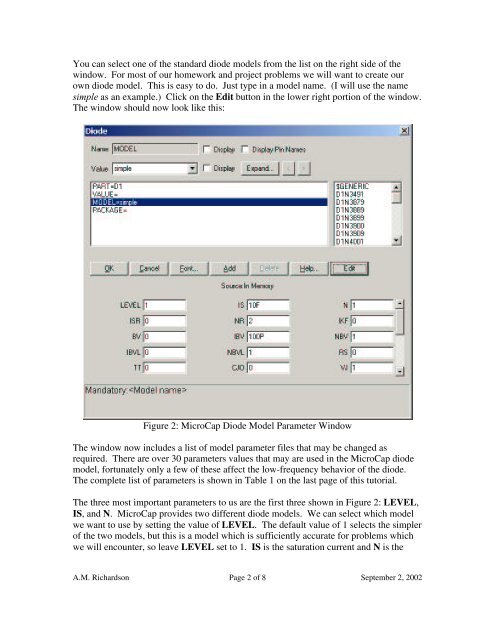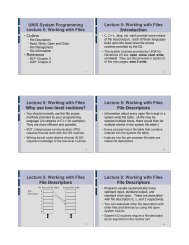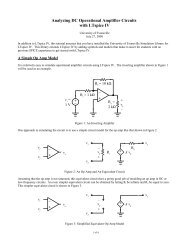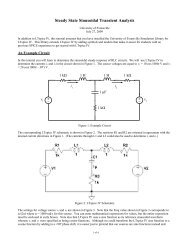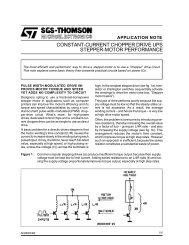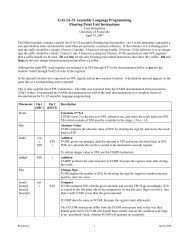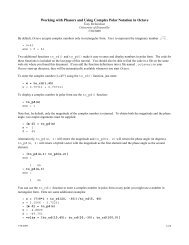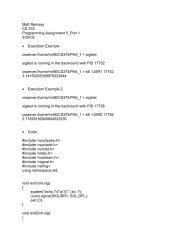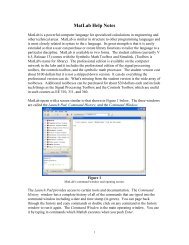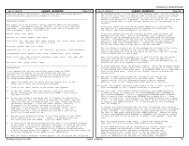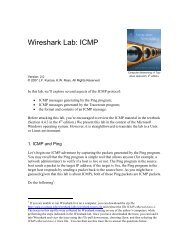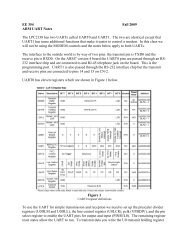Modeling Diode Circuits with MicroCap 7.0 - csserver - University of ...
Modeling Diode Circuits with MicroCap 7.0 - csserver - University of ...
Modeling Diode Circuits with MicroCap 7.0 - csserver - University of ...
Create successful ePaper yourself
Turn your PDF publications into a flip-book with our unique Google optimized e-Paper software.
You can select one <strong>of</strong> the standard diode models from the list on the right side <strong>of</strong> the<br />
window. For most <strong>of</strong> our homework and project problems we will want to create our<br />
own diode model. This is easy to do. Just type in a model name. (I will use the name<br />
simple as an example.) Click on the Edit button in the lower right portion <strong>of</strong> the window.<br />
The window should now look like this:<br />
Figure 2: <strong>MicroCap</strong> <strong>Diode</strong> Model Parameter Window<br />
The window now includes a list <strong>of</strong> model parameter files that may be changed as<br />
required. There are over 30 parameters values that may are used in the <strong>MicroCap</strong> diode<br />
model, fortunately only a few <strong>of</strong> these affect the low-frequency behavior <strong>of</strong> the diode.<br />
The complete list <strong>of</strong> parameters is shown in Table 1 on the last page <strong>of</strong> this tutorial.<br />
The three most important parameters to us are the first three shown in Figure 2: LEVEL,<br />
IS, and N. <strong>MicroCap</strong> provides two different diode models. We can select which model<br />
we want to use by setting the value <strong>of</strong> LEVEL. The default value <strong>of</strong> 1 selects the simpler<br />
<strong>of</strong> the two models, but this is a model which is sufficiently accurate for problems which<br />
we will encounter, so leave LEVEL set to 1. IS is the saturation current and N is the<br />
A.M. Richardson Page 2 <strong>of</strong> 8 September 2, 2002


